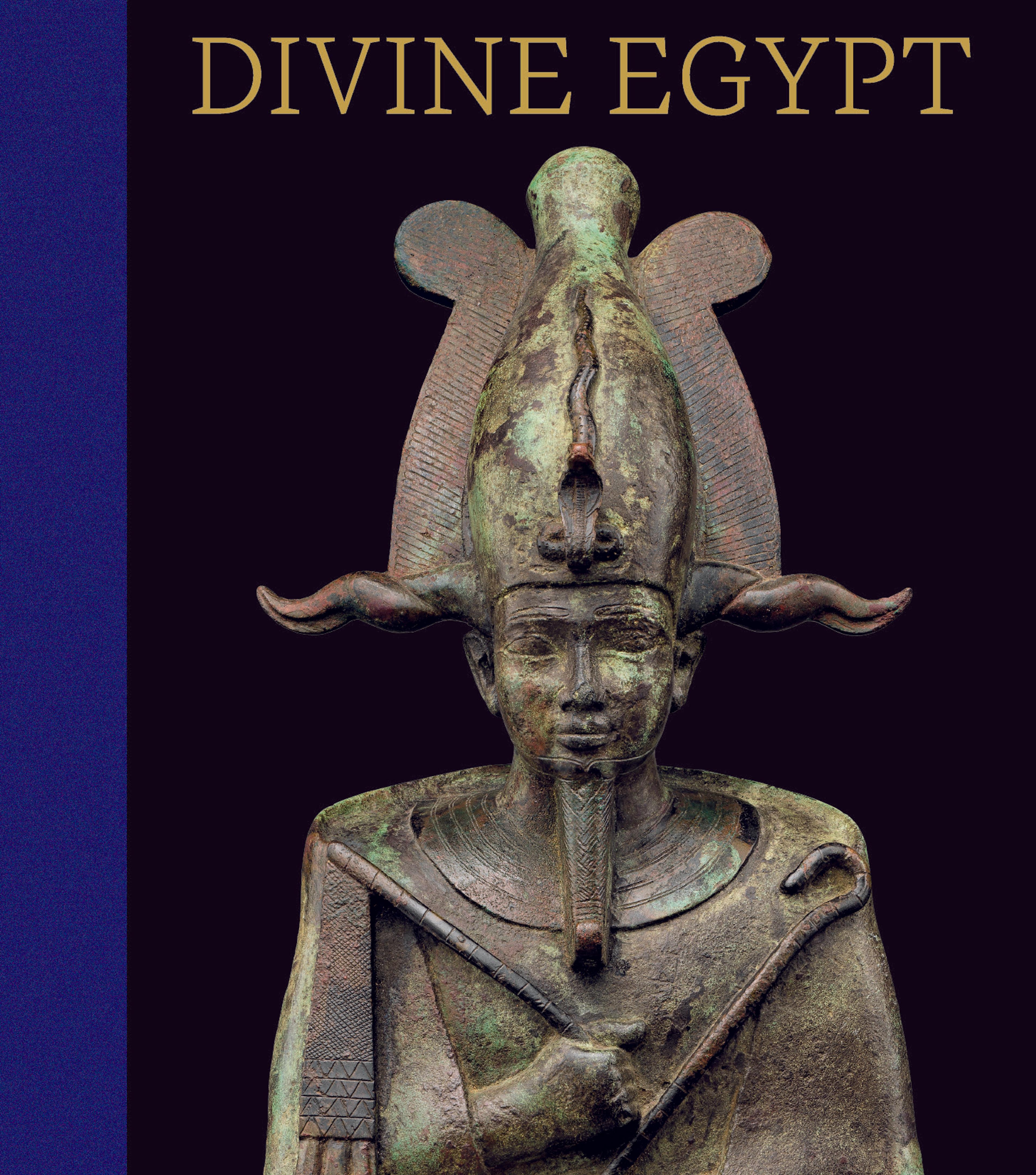Statuette of a hippo goddess, probably Taweret
In all likelihood, this statuette represents the goddess Taweret, whose domain was the protection of pregnant women, especially during childbirth. Her menacing image, intended to frighten away demons and other deadly creatures, combines human, hippopotamus, crocodile, and lion attributes. The post on her head probably supported a metal crown in the shape of a sun disk, surmounted by either feathers or horns. The stylized symbol under her front paws can be best interpreted as the sa amulet. Although Taweret was worshipped in both secular and sacred settings, this statuette's almost perfect condition, exceptional craftsmanship, size, and iconography suggest that it was created for a temple—possibly for the "birth house" where this goddess was linked with Isis.
In the past, the piece was identified as true glass. While it is difficult to identify the material precisely, pooling of glaze around the feet and the slightly grainy structure visible in a few places strongly argue for glassy faience. Possibly the overall form was created in a mold, but details of the head and extremities, which convey the deity's power and intimidating nature, must have been modeled by hand. The pale blue color of the glaze assists in assigning a Ptolemaic Period date.
In the past, the piece was identified as true glass. While it is difficult to identify the material precisely, pooling of glaze around the feet and the slightly grainy structure visible in a few places strongly argue for glassy faience. Possibly the overall form was created in a mold, but details of the head and extremities, which convey the deity's power and intimidating nature, must have been modeled by hand. The pale blue color of the glaze assists in assigning a Ptolemaic Period date.
Artwork Details
- Title:Statuette of a hippo goddess, probably Taweret
- Period:Ptolemaic Period
- Date:332–30 BCE
- Geography:From Egypt
- Medium:Glassy faience
- Dimensions:H. 11 × W. 3.3 × D. 4.8 cm (4 5/16 × 1 5/16 × 1 7/8 in)
- Credit Line:Purchase, Edward S. Harkness Gift, 1926
- Object Number:26.7.1193
- Curatorial Department: Egyptian Art
More Artwork
Research Resources
The Met provides unparalleled resources for research and welcomes an international community of students and scholars. The Met's Open Access API is where creators and researchers can connect to the The Met collection. Open Access data and public domain images are available for unrestricted commercial and noncommercial use without permission or fee.
To request images under copyright and other restrictions, please use this Image Request form.
Feedback
We continue to research and examine historical and cultural context for objects in The Met collection. If you have comments or questions about this object record, please contact us using the form below. The Museum looks forward to receiving your comments.
